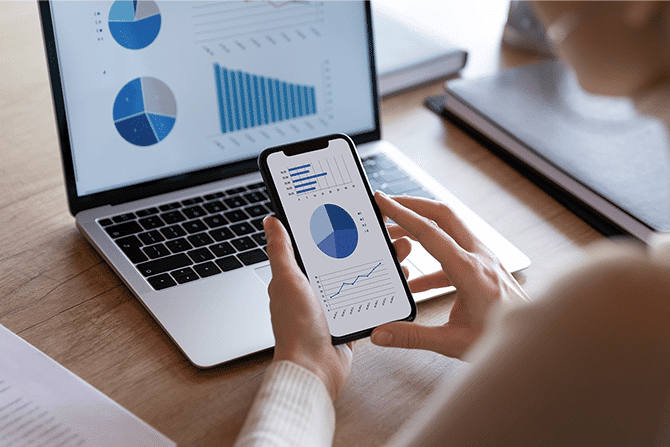How self-service data powers data-centric public sector organizations
To meet challenges around transparency, efficiency and accountability, central and local government organizations need to embrace data across their operations. How can they ensure that they successfully share data through self-service with all employees, elected officials, other government departments and external partners?

Organizations across the public sector increasingly understand the importance of data to their operations. The majority of federal, state and municipal agencies have already deployed open data portals to drive transparency and engagement and meet regulatory requirements.
However, sharing data internally delivers even greater benefits, helping public sector organizations become more data-centric and enabling them to meet their wider objectives. Internal data sharing through self-service enables data democratization and delivers benefits in terms of:
- Greater efficiency, as data automates processes and removes manual work
- Better decision-making, with employees and elected officials able to plan more effectively through access to complete information
- Increased collaboration between different teams and departments, unlocking innovation
- The ability to adapt to current and future trends, such as digitization, decarbonization and the creation of smart cities through access to relevant, comprehensive data
The challenges to self-service data in the public sector
Public sector leaders surveyed by Capgemini believe that better data sharing across the organization leads to a 9.5% improvement in the use of funds and resources. Yet just 27% have created data ecosystems, demonstrating the scale of challenges to sharing data internally via self-service.
These challenges evolve around four key areas:
- Skills. Many public sector organizations don’t yet have strong enough data handling skills and capabilities. More importantly, they lack people with business intelligence analysis skills who can turn data into value. The majority of staff simply don’t have the training and knowledge to interact with data in their working lives.
- Culture. Often public sector organizations are process-driven and risk-averse – after all, they are custodians of taxpayers’ money, which they must use responsibly. However, this can lead to a closed, silo-based culture which does not embrace the possibilities of internal data sharing through self-service.
- Technology. Public sector technology infrastructure may not be as advanced or well-funded as enterprise organizations. This means IT and data teams don’t have the right tools to successfully manage and share data across the organization.
- Data quality and governance. There is a wide range of datasets collected within public sector organizations. However, a lack of effective data governance means data can be hard to locate, poor quality or incomplete. This leads to a lack of trust from employees, meaning they don’t use data to unlock its benefits.
The benefits of self-service data
Self-service data sharing delivers benefits to employees, elected officials and external partners:
Employees
- Increased efficiency and productivity in their day-to-day work
- Greater communication and collaboration with other departments
- Better understanding of the strategic issues and objectives that the organization has, and the needs of citizens and other stakeholders
- Better decision-making
Elected officials
- Improved oversight and monitoring of performance against KPIs
- Ability to better steer public policies and demonstrate progress against objectives
- Can justify decision-making through access to complete data
- Build stronger organizations by communicating internal strategy and values, breaking down silos
Partners
- Make it simpler to create ecosystems that contribute to public objectives
- Drive innovation and create new data-driven services
- Foster greater collaboration between the public and private sectors
- Meet community needs, such as by creating mobility apps that bring together public and private data
Use cases for self-service data
Providing self-service access to data, combined with an easy to use data experience platform, allows everyone to create compelling data visualizations, dashboards and services.
Use cases include:
- Creating automated reporting – automatically collecting and sharing data so that everyone has access to a single source of truth on key metrics, available in easily understandable formats to decision-makers in central and local government
- Demonstrating performance – monitoring everything from spending against budget to performance against KPIs, such as around central government projects, social support or diversity policies
- Showing project progress – for example monitoring and showing where new equipment such as fiber networks or EV charging stations has been deployed at both a local and national level
- Enabling smart cities – sharing key metrics with local government staff so that they can drive the creation of smart cities. For example, deploying smart trash cans that automatically message when they are nearly full avoids staff having to manually check them
- Monitoring key resources – using Internet of Things (IoT) sensors, government agencies and municipalities can monitor everything from waste management to water quality/levels in local rivers. This enables better planning and helps give early warnings of issues such as potential flooding.
- Monitoring equipment – dashboards can provide information on equipment, such as traffic lights or building systems, enabling employees to take action if malfunctions occur
- Facilitating decarbonization – using emissions, air quality and traffic data to effectively plan environmental strategies or analyzing energy usage to target national programs to increase sustainability
The essential features to launch your internal self-service data portal
Public sector organizations should follow a four stage process to ensure they are effectively sharing their data internally through self-service:
1. Create a single point of access for your data
Bring your data from across the organization together in a centralized data sharing portal, regardless of its original format or source. Automate connections to your data sources and business applications to ensure data is always up-to-date.
2. Organize and improve the quality of your data
Increase the value of your data by improving its quality. Much of this can be automated, for example through text corrections to standardize fields and formatting of values such as dates. Data should also be anonymized if required. Datasets can then be combined and enriched, either with further internal data or through third-party data, such as the 29,000 public datasets available on the Opendatasoft Data hub.
3. Make your data intelligible to all
Provide data through compelling visualizations so that non-experts can easily understand and use it. Look for a data experience platform that provides a range of visualizations, from maps to dashboards, and that allows them to be created without coding skills. Make sure you are delivering data experiences for all types of internal and/or external audiences, from the technical expert to consumers or partners. Encourage reuse by offering APIs and other download options to integrate data with other business systems.
4. Manage access to ensure security and confidentiality
Public sector organizations often handle sensitive data or may be sharing data across different groups or agencies. Strategies should therefore be built on strong governance and permissions that guarantee that users see relevant data to their needs and access rights. If data is shared between different agencies via a single internal portal ensure that users only have access to appropriate datasets, maximizing both efficiency and security.
Whether in local, central or state government, public sector organizations have to meet a growing range of challenges, from achieving greater efficiency to successfully driving decarbonization. Becoming data-centric by sharing data internally and with partners is essential to success, both now and in the future.



